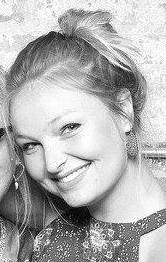- Calls to this hotline are currently being directed to Within Health, Fay or Eating Disorder Solutions
- Representatives are standing by 24/7 to help answer your questions
- All calls are confidential and HIPAA compliant
- There is no obligation or cost to call
- Eating Disorder Hope does not receive any commissions or fees dependent upon which provider you select
- Additional treatment providers are located on our directory or samhsa.gov
A History of Eating Disorder Advocacy: Where Are We Today?

Contributor: By Rachael Clauson, MAAT, Eating Disorder Specialist, Timberline Knolls Residental Treatment Center
If you type in eating disorder recovery or body positivity into the Google search bar, it’s evident that these issues are finally spending time in the spotlight with endless pages of encouragement and honesty in recovery from eating disorders and self-hate.
There are countless hashtags across various social media platforms that offer connection to these supportive communities. With endless supportive options, this is something that is new to the eating disorder community, since it has only been in the past several decades that this disorder has been recognized as a severe mental illness that demands this level of attention and support.
Understanding the History of Eating Disorders Advocacy
Eating disorders have existed for centuries with documentation coming from a variety of cultures describing eating disorder behaviors such as ancient Romans overindulging in food and relieving themselves by vomiting only to continue to participate in the feasting.
Tribal communities in Africa offer stories of people fasting during times of famine to save food for their children and then continuing to restrict food even after times of famine. These are only a couple examples of eating disorder behaviors documented in the vast history of humankind.
Eating disorders were once perceived as a spiritual act as an effort to rid of evil and be closer to God, and were not viewed as a medical condition until the 1680s in England. Anorexia and Bulimia were originally viewed as physical diseases caused by a medical condition, such as hormone imbalances.
During the 1930s, the medical community began to expand their views on eating disorders and began to see them as being evidence o f emotional and psychological turmoil rather than wholly physical. In the 1970s, Hilde Brunch wrote a book geared towards professionals that suggested eating disorders were a serious problem; however, this information was not readily available to the public.
f emotional and psychological turmoil rather than wholly physical. In the 1970s, Hilde Brunch wrote a book geared towards professionals that suggested eating disorders were a serious problem; however, this information was not readily available to the public.
The public finally began to see eating disorders as real-life issues when anorexia nervosa was represented in the television movie The Best Little Girl in the World and the talented and famous singer Karen Carpenter died from heart failure following her struggle with anorexia. It was then that the media began to highlight eating disorder struggles in magazines, talk shows, books, and other media platforms.
The “Why?” Behind Eating Disorders
The number of people with eating disorders continues to increase and the public continues to ask “why?” This may be happening for various reasons. First, the public may be paralleling society’s pursuit for thinness and perfection and feelings that may have been expressed in other ways may now manifest in eating disorder behaviors. Second, with eating disorders being addressed more publically with definitions and diagnoses, they are better understood and recognized as a problem in society and individuals may feel more open to speak out about their struggles.
With eating disorders receiving more attention and support as serious mental illnesses, organizations have joined the forces of recognition and advocacy to bring awareness to these illnesses.
The National Eating Disorder Association, also known as NEDA, was formed in 2001 when Eating Disorder Awareness and Prevention (EDAP) joined forces with the American Anorexia Bulimia Association (AABA), establishing the largest and longest standing eating disorder prevention and advocacy organizations in the world. Additional mergers to this alliance include the National Eating Disorder Organization (NEDO) and the Anorexia Nervosa and Related Disorders (ANRED). Also, the Binge Eating Disorder Association (BEDA) was founded in June, 2008. The founder, Chevese Turner, recognized the need for this association, as there is often silent (or loud) shame around binge eating disorder.
 Looking Ahead to the Future
Looking Ahead to the Future
As these organizations are making headway in the eating disorder recovery community by partnering with additional anti-bullying campaigns, body positivity movements, and others, social media communities and hashtag movements continue to advocate and demand recognition of these serious illnesses.
It is evident that the eating disorder recovery community has come a long way since the early days of awareness and advocacy for these illnesses.
With the continued hope, drive, and compassion of this community, there is no saying where this movement will go next.
 About the Author: Rachael Clauson, MAAT, is and Eating Disorder Specialist at Timberline Knolls Residential Treatment Center. Her primary responsibilities consist of facilitating group therapy, creating individualized support plans, and providing support and awareness for resident’s continued success in recovery. She received a Bachelor of Science Degree in Drawing and Painting from Northern Michigan University. She also received her Master of Arts in Art Therapy from The School of The Art Institute of Chicago.
About the Author: Rachael Clauson, MAAT, is and Eating Disorder Specialist at Timberline Knolls Residential Treatment Center. Her primary responsibilities consist of facilitating group therapy, creating individualized support plans, and providing support and awareness for resident’s continued success in recovery. She received a Bachelor of Science Degree in Drawing and Painting from Northern Michigan University. She also received her Master of Arts in Art Therapy from The School of The Art Institute of Chicago.
References:
[1]: https://www.nationaleatingdisorders.org/who-we-are [2]: http://bedaonline.com/a-brief-history-of-eating-disorders-binge-eating-disorder/ [3]: https://www.mentalhelp.net/articles/historical-understandings/ [4]: http://bedaonline.com/beda-founder-history/The opinions and views of our guest contributors are shared to provide a broad perspective of eating disorders. These are not necessarily the views of Eating Disorder Hope, but an effort to offer discussion of various issues by different concerned individuals.
We at Eating Disorder Hope understand that eating disorders result from a combination of environmental and genetic factors. If you or a loved one are suffering from an eating disorder, please know that there is hope for you, and seek immediate professional help.
Reviewed By: Jacquelyn Ekern, MS, LPC on March 15, 2017.
Published on EatingDisorderHope.com

The EatingDisorderHope.com editorial team comprises experienced writers, editors, and medical reviewers specializing in eating disorders, treatment, and mental and behavioral health.

